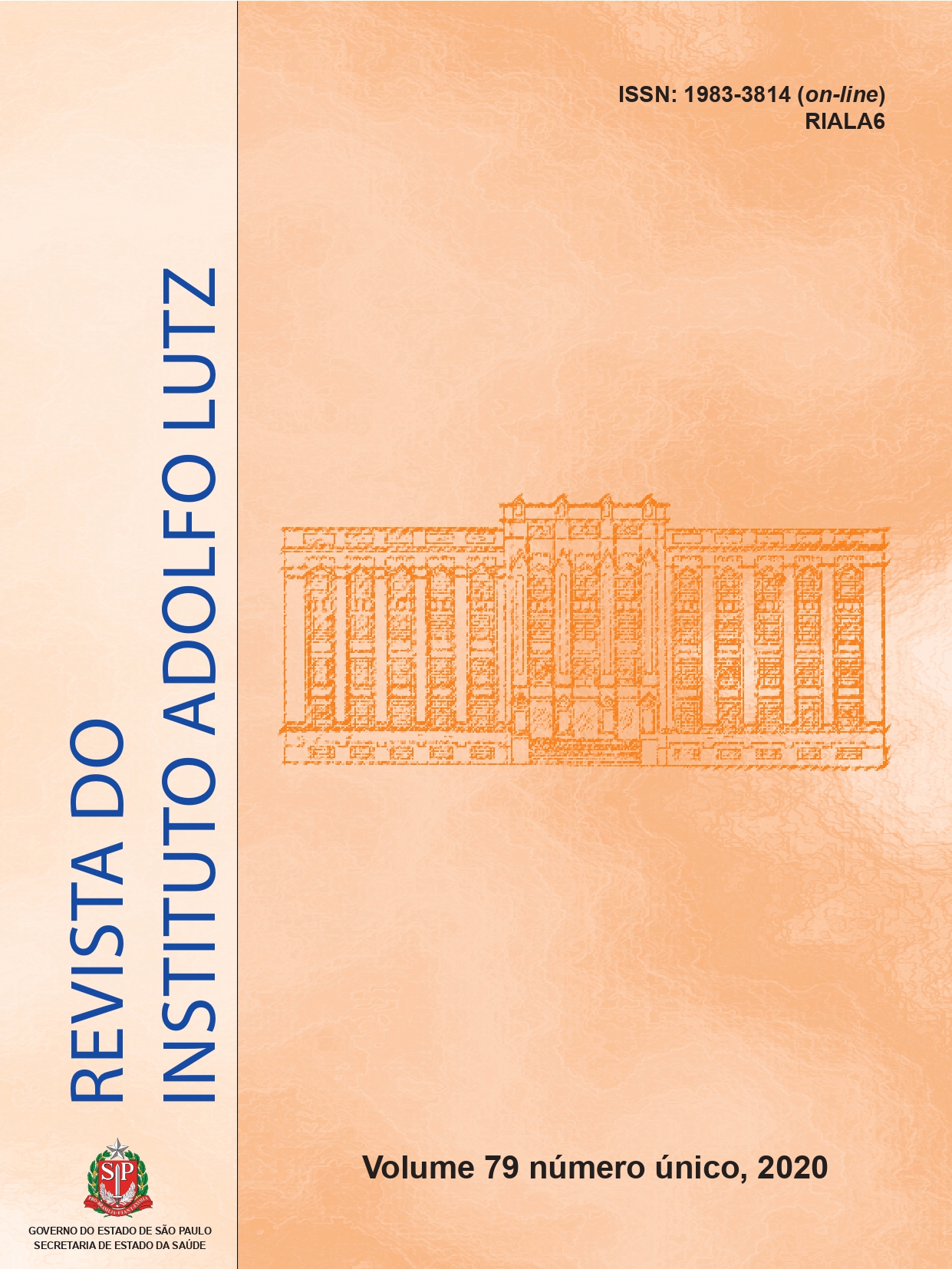Abstract
This study evaluated the good handling practices in the ten Hospital Nutrition Services of the
respective hospitals in the South of Brazil, classified as general hospitals. For data collection, there
was used a Checklist for Good Handling Practices for Food Services based on current legislation.
Among the results, the average of adequacy of the hospitals stand out, showing that the items related
to responsibilities and edifications had the lowest adequacies, 67% and 73%, respectively, followed
by the food handler block, with 76% of adequacies. The block referring to food handlers showed
that few of them sanitize the hands during the change of activity. The classification of hospitals in
relation to Good Handling Practices was satisfactory, however, greater failure was observed related
to the practices of the food handlers, which are crucial for the safety of food produced in Hospital
Nutrition Services.
References
Medeiros CO, Hecktheuer LH. Good hygiene practices
in hospital nutrition services: the view of internal and
external auditors. Food Sci Technol. 2016; 36(3): 461-7.
http://dx.doi.org/10.1590/1678-457X.00315
2. Horn AL, Friedrich H. Locating the source of largescale
outbreaks of food borne disease. J R Soc Interface.
2019;16(151):20180624. https://doi.org/10.1098/
rsif.2018.0624
3. World Health Organization - WHO. Food Safety.
Geneva, Switzerland: WHO; Apr 2020. [accessed 2020
Dec 10]. Available on line: https://www.who.int/NEWSROOM/
FACT-SHEETS/DETAIL/FOOD-SAFETY
4. Ministério da Saúde (BR). Secretaria de Vigilância em
Saúde. Informe sobre surtos notificados de doenças
transmitidas por água e alimentos – Brasil, 2016-2019.
Boletim epidemiológico. 2020;51(32):27-31. Disponível
em: https://antigo.saude.gov.br/images/pdf/2020/
August/17/Boletim-epidemiologico-SVS-32.pdf
5. Ministério da Saúde (BR). Agência Nacional de
Vigilância Sanitária. Resolução RDC nº 216, de 15 de
setembro de 2004. Dispõe sobre Regulamento Técnico
de Boas Práticas para Serviços de Alimentação. Diário
Oficial da União. Brasília, DF,16 set 2004.
6. Ministério de Saúde (BR). Agência Nacional de
Vigilância Sanitária. Resolução RDC nº. 52, de 29
de setembro de 2014. Altera a Resolução RDC nº
216, de 15 de setembro de 2004, que dispõe sobre o
Regulamento Técnico de Boas Práticas para os Serviços
de Alimentação. Diário Oficial da União. Brasília, DF,
01 out 2014. Seção 1(189):51.
7. Secretaria da Saúde (RS). Centro Estadual de Vigilância
em Saúde do Rio Grande do Sul. 2009. Portaria n°. 78,
de 30 de janeiro de 2009. Aprova a Lista de Verificação
em Boas Práticas para Serviços de Alimentação, aprova
Normas para Cursos de Capacitação em Boas Práticas
para Serviços de Alimentação e dá outras providências.
[acesso 2019 Set 27] Disponível em: https://www.cevs.
rs.gov.br/upload/arquivos/201612/26090340-portariases-
rs-nu-78-de-2009.pdf
8. Secretaria da Saúde (RS). Centro Estadual de Vigilância
em Saúde do Rio Grande do Sul.. 2014. Portaria nº 1224
de 02 de setembro de 2014. Altera a Portaria nº 78, de
30 de janeiro de 2009, que aprova a Lista de Verificação
em Boas Práticas para Serviços de Alimentação,
aprova normas para Cursos de Capacitação em Boas
Práticas para Serviços de Alimentação e dá outras
providências. [acesso 2019 Jul 30]. https://www.cevs.
rs.gov.br/upload/arquivos/202004/17095204-portariases-
rs-nu-1-224-de-2014.pdf
9. McIntyre L, Vallaster L, Wilcott L, Henderson S,
Kosatsky T. Evaluation of food safety knowledge,
attitudes and self-reported hand washing practices in
foodsafe trained and untrained food handlers in British
Columbia Canada. Food Control. 2013;30(1):150-6.
https://dx.doi.org/10.1016/j.foodcont.2012.06.034
10. Läikkö-Roto T, Lunden J, Heikkila J, Nevas M.
Prerequisites for effective official food control. Food
Control. 2016;61:172-9. https://dx.doi.org/10.1016/j.
foodcont.2015.09.043
11. Cunha DT, Oliveira ABA, Saccol ALF, Tondo EC,
Silva Junior EA, Ginani VC et al. Food safety of food
services within the destinations of the 2014 FIFA
World Cup in Brazil: development and reliability
assessment of the official evaluation instrument. Food
Res Int. 2014;57:95-103. https://dx.doi.org/10.1016/j.
foodres.2014.01.021
12. Lima MS, Maia SR, Santos AT, Uchoa FNM, Foschetti
DA, Cerqueira GS et al. Análise microbiológica da
lavagem de mãos em funcionários de uma unidade
de alimentação e nutrição de Fortaleza-CE. Rev
Inter. 2015;8(3):61-9. http://dx.doi.org/10.22280/
revintervol8ed3.218
13. Sithole Z, Juru T, Chonzi P, Banqure D, Shambira
G, Gombe NT et al. Food borne illness amongst
health care workers, at a Central Hospital, Harare,
Zimbabwe, 2016: a retrospective cohort study. BMC
Res Notes. 2017;10(1),715. https://doi.org/10.1186/
s13104-017-3030-x
14. Fernández-Martínez B, Alguacil-Pau AI, Crespo-Sevilla
R, García-Veja A. Predictores de la satisfacción de los
pacientes con la alimentación de un hospital público
de Madrid. Rev Calid Asist. 2013;28(3):155-62. http://
dx.doi.org/10.1016/j.cali.2012.09.005
15. Olmedo PV, Stangarlin-Fiori L, Medeiros CO, Tondo EC,
Ferreira SMR. A profile of food services in Curitiba and
a critical analysis of the results of sanitary inspections
at these establishments. J Food Saf. 2018;38:e12377.
https://doi.org/10.1111/jfs.12377

This work is licensed under a Creative Commons Attribution 4.0 International License.
Copyright (c) 2020 Instituto Adolfo Lutz Journal
